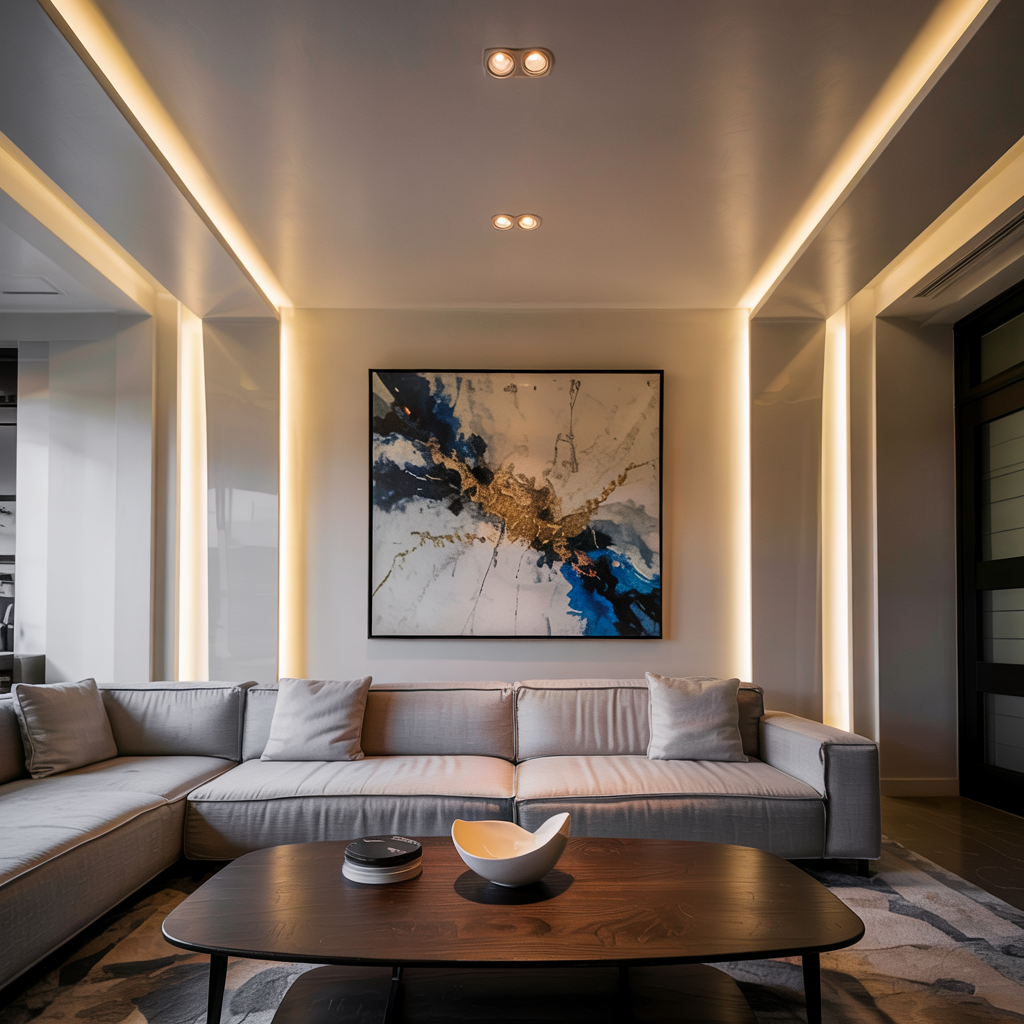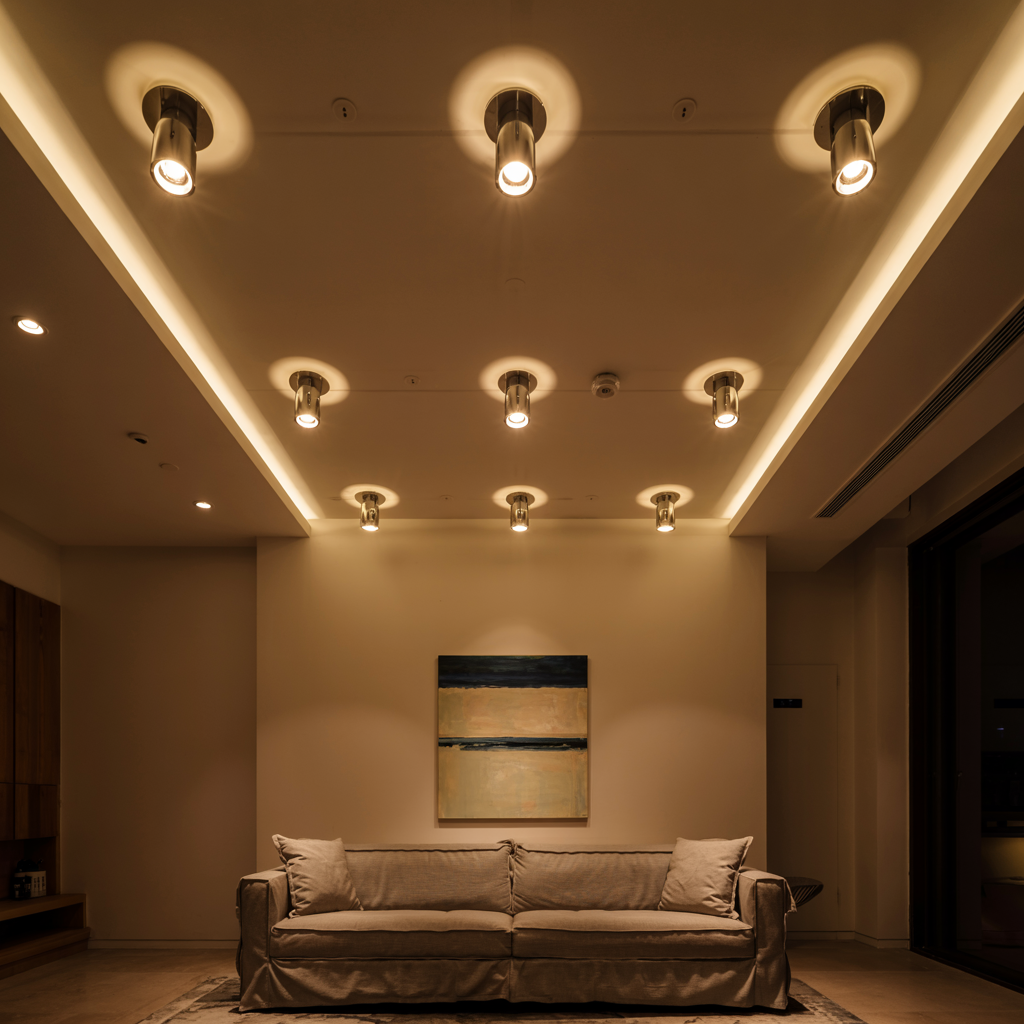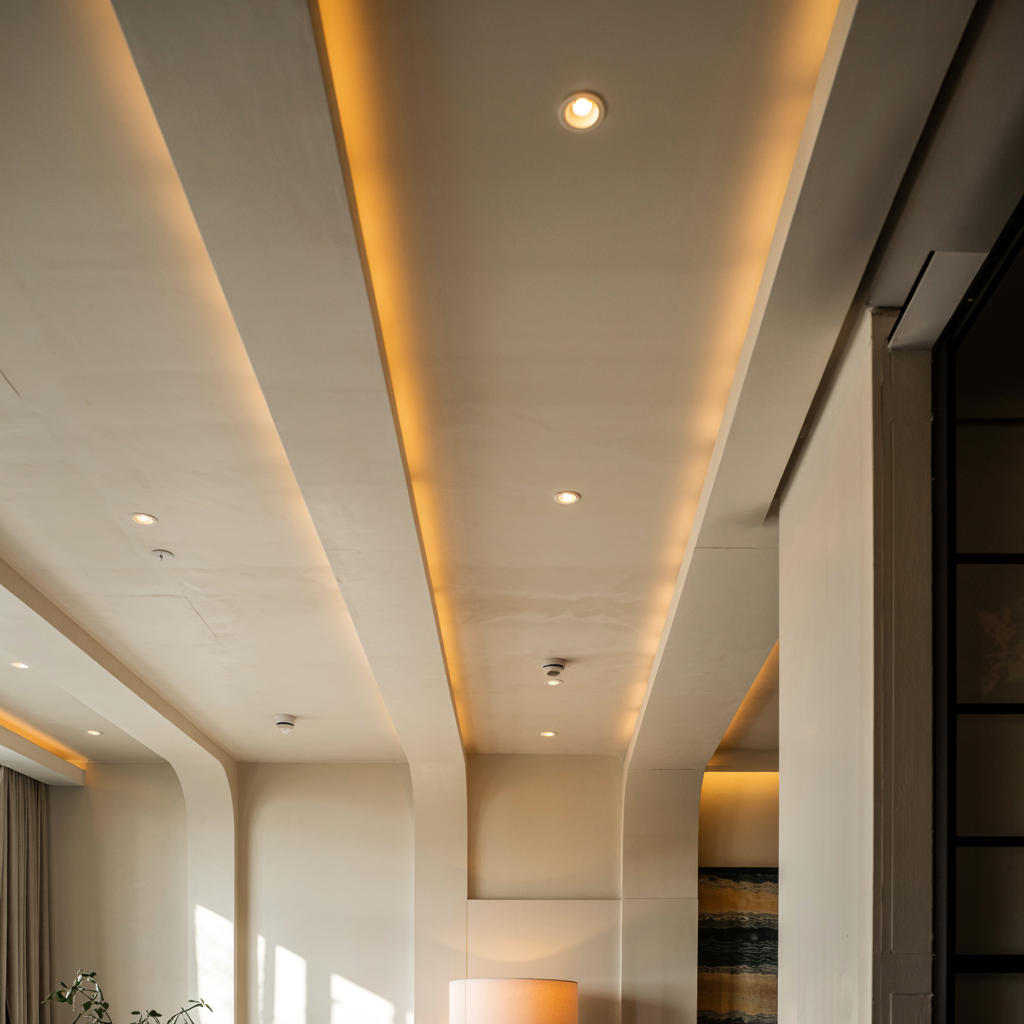What Size Recessed Lights for Living Room? The Straightforward Answer For You
Creating the perfect ambiance in your living room involves careful consideration of many factors, and lighting is arguably one of the most important. This guide dives deep into the question: What size recessed lights for living room? We’ll explore everything from understanding lumens and wattage to determining the appropriate number of fixtures and their ideal…
Creating the perfect ambiance in your living room involves careful consideration of many factors, and lighting is arguably one of the most important. This guide dives deep into the question: What size recessed lights for living room? We’ll explore everything from understanding lumens and wattage to determining the appropriate number of fixtures and their ideal placement. You’ll learn how to calculate lighting needs, choose the right color temperature, and even consider smart lighting options. By the end, you’ll be confident in selecting the perfect recessed lighting solution for your living space.
Lumens (lm) measure the total amount of light emitted by a light source. A higher lumen value means brighter light. Think of it like the “power” of your light. A 1000-lumen bulb will be significantly brighter than a 500-lumen bulb.
Wattage
(W) measures the amount of energy a light bulb consumes. While lumens measure brightness, wattage indicates energy efficiency. LEDs, for example, offer high lumens with low wattage, making them energy-efficient choices.
What Size Recessed Lights for Living Room?
For most living rooms, 6-inch recessed lights work best. They provide broad light coverage and suit standard ceiling heights. Use 4-inch lights for accent lighting or smaller areas. Space them 4 to 6 feet apart and place them evenly to avoid shadows. Always match size with room scale and ceiling height.
The Relationship Between Lumens and Wattage

The relationship between lumens and wattage isn’t fixed; it depends on the type of bulb. LEDs deliver more lumens per watt than incandescent bulbs, meaning you get brighter light for less energy.
Calculating Your Living Room’s Lighting Needs
| Room Size (ft) | Ceiling Height | Recommended Light Size | Spacing Between Lights | Estimated Number of Lights |
|---|---|---|---|---|
| 12 x 12 | 8 – 9 ft | 6-inch | 4 – 5 ft | 4 – 6 |
| 14 x 16 | 8 – 10 ft | 6-inch | 5 – 6 ft | 6 – 8 |
| 16 x 20 | 9 – 11 ft | 6-inch | 5 – 6 ft | 8 – 10 |
| 18 x 22 | 10 – 12 ft | 6-inch or combo with 4-inch | 5 – 6 ft | 10 – 12 |
| 20 x 24 | 10 – 12+ ft | 6-inch | 6 – 7 ft | 12 – 14 |
Note: Multiply the room’s square footage by 1.5 to estimate total wattage needed. Divide by the bulb wattage to get an idea of how many lights you need.
Measuring the Square Footage
Start by calculating your living room’s square footage. Length x width = square footage. This is the foundation for determining your lighting requirements.
Determining the Required Lumens
A general rule of thumb is to aim for 20-30 lumens per square foot for general ambient lighting. However, this can vary depending on the room’s purpose and color scheme. Darker rooms require more lumens.
Example Calculation
A 15ft x 12ft living room (180 square feet) would need 3600-5400 lumens (180 sq ft x 20-30 lm/sq ft).
Read More: Choosing The Perfect Living Room Lighting: What Color Light Bulb for Living Room?
Choosing the Right Recessed Light Fixture Size

Understanding Fixture Diameter
Recessed light fixtures come in various diameters, typically ranging from 3 inches to 6 inches. Larger fixtures generally provide more light but may not be aesthetically suitable for all ceilings.
Considering Trim Size
The trim is the visible part of the recessed light fixture. The trim size impacts the overall look. Choose a trim size that complements your ceiling design and the overall aesthetic of your living room.
Matching Fixture and Trim Size
Ensure the fixture’s diameter is compatible with the chosen trim. Incorrect matching can result in a poorly fitted and unsightly installation.
Read More: Glow Up High: 10 Stunning Vaulted Ceiling Lighting Ideas
Number of Recessed Lights Needed

Spacing Considerations
Evenly distribute lights across the ceiling. Avoid concentrating lights in one area. The spacing between lights generally should be between 2-4 feet, depending on the size and lumen output of the fixtures.
Room Shape and Layout
The shape and layout of your living room influence the number and placement of lights. Long, narrow rooms may require a linear arrangement, whereas square rooms allow for more flexibility.
Ambient, Task, and Accent Lighting
Consider different layers of lighting. Ambient lighting provides overall illumination, task lighting targets specific areas (like a reading nook), and accent lighting highlights features.
Read More: How to Choose Dining Room Lighting? The Ultimate Guide To Choosing The Perfect Lighting
Color Temperature and Light Appearance
Kelvin (K) Scale
The Kelvin (K) scale measures color temperature, ranging from warm (2700K) to cool (5000K) white. Warm light creates a cozy atmosphere, while cool light feels more modern and energetic.
Choosing the Right Color Temperature
Consider the overall mood you want to create. Warm light is generally preferred for living rooms, promoting relaxation. However, task areas may benefit from slightly cooler light.
Examples of Color Temperatures
2700K (warm white): Soft, inviting, perfect for relaxation. 3000K (soft white): A good balance between warm and cool. 4000K (cool white): Bright, energizing, suitable for task areas.
Installation Considerations
Ceiling Height and Type
The height and type of your ceiling affect the choice of recessed lights. Lower ceilings may benefit from smaller fixtures to avoid a cluttered look. Consider the structure of your ceiling (drywall, plaster, etc.) when choosing fixtures and installation methods.
Wiring and Electrical Requirements
Ensure you have the necessary electrical wiring and understand the voltage requirements for your chosen recessed lights. If you’re not comfortable with electrical work, hire a qualified electrician.
Accessibility to Wiring
Check for accessibility to wiring before purchasing your lights. Consider the location of joists and other structural elements that might impact installation.
Different Types of Recessed Lighting
IC-Rated vs. Non-IC-Rated Fixtures
IC-rated fixtures are insulated contact rated and can be installed directly in contact with insulation. Non-IC-rated fixtures require a gap between the fixture and insulation for fire safety.
Adjustable vs. Fixed Fixtures
Adjustable fixtures allow you to direct the light beam, ideal for accent lighting. Fixed fixtures provide a consistent, wide spread of light, suitable for general illumination.
Trim Styles and Finishes
Recessed light trims come in various styles (e.g., round, square, decorative) and finishes (e.g., brushed nickel, matte black, white) to match your décor.
Smart Lighting Options
Integration with Smart Home Systems
Smart recessed lights can be integrated with smart home systems like Google Home or Amazon Alexa for voice control and automated lighting schedules.
Dimmable Features
Dimmable lights offer flexibility in controlling brightness, allowing you to adjust the lighting according to the time of day or your mood.
Energy Efficiency and Cost Savings
Smart lighting systems often incorporate energy-saving features, leading to reduced energy consumption and lower electricity bills.
Benefits of Recessed Lighting
Space-Saving Design
Recessed lights are flush with the ceiling, maximizing headroom and minimizing visual clutter. This is particularly beneficial in smaller living rooms.
Versatile Lighting Options
They offer a range of light styles and colors, adaptable to different moods and activities in your living room.
Improved Aesthetics
They can create a sleek and modern look, enhancing the overall design of your space.
Limitations of Recessed Lighting
Installation Complexity
Installing recessed lighting can be more complex than other lighting types, often requiring electrical expertise.
Cost Considerations
The upfront cost of recessed lights and installation may be higher compared to other options.
Ceiling Height Restrictions
In very low ceilings, recessed lighting may reduce headroom significantly.
Comparing Recessed Lighting with Other Options
Recessed vs. Track Lighting
Track lighting offers more flexibility in adjusting light direction but may be less aesthetically integrated than recessed lighting.
Recessed vs. Pendant Lights
Pendant lights provide a statement piece but require more vertical space than recessed lighting.
Recessed vs. Floor Lamps
Floor lamps offer portability and adjustability but may not provide the same even illumination as recessed lights.
Maintaining Your Recessed Lights
Cleaning and Dust Removal
Regular cleaning will maintain the brightness and efficiency of your lights. Gently wipe the trims and diffusers with a soft cloth.
Bulb Replacement
LEDs generally last much longer than incandescent bulbs. When replacing bulbs, always ensure the power is off. Choose energy-efficient options.
Troubleshooting Issues
If lights stop working, check the circuit breaker and wiring. Consider replacing faulty bulbs or fixtures.
Frequently Asked Questions
What is the best lumen output for a living room?
The ideal lumen output depends on your living room’s size and desired brightness. As a guideline, aim for 20-30 lumens per square foot. A larger living room will require more lumens than a smaller one.
How many recessed lights do I need for a 200 square foot living room?
For a 200 square foot living room, you’d need approximately 4000-6000 lumens. The exact number of lights depends on the lumen output of each fixture. You could use 4-6 lights with 1000-1500 lumens each, spaced evenly across the ceiling.
What is the difference between IC-rated and non-IC-rated recessed lights?
IC-rated fixtures can be installed directly in contact with insulation, while non-IC-rated fixtures require a gap between the fixture and insulation for fire safety. Check your local building codes and consult with an electrician to determine the appropriate rating.
Can I install recessed lighting myself?
While some DIY enthusiasts might attempt installation, it’s crucial to understand the electrical aspects involved. Improper installation can pose safety hazards. It’s generally recommended to hire a qualified electrician for a safe and compliant installation.
How do I choose the right trim size for my recessed lights?
The trim size should complement the size of the fixture and your ceiling’s design. Larger trims are suitable for larger fixtures and higher ceilings, while smaller trims work better in smaller spaces.
Final Thoughts
Selecting the right what size recessed lights for living room is crucial for creating the perfect ambiance. By carefully considering factors like lumens, wattage, fixture size, spacing, and color temperature, you can transform your living room into a comfortable and well-lit space. Remember to consider different lighting layers (ambient, task, and accent) and explore smart lighting options for enhanced control and energy efficiency. Don’t hesitate to seek professional help for installation if needed – it ensures safety and a flawlessly lit living room that will impress for years to come. Now that you’re armed with the knowledge, it’s time to illuminate your living room to perfection!

